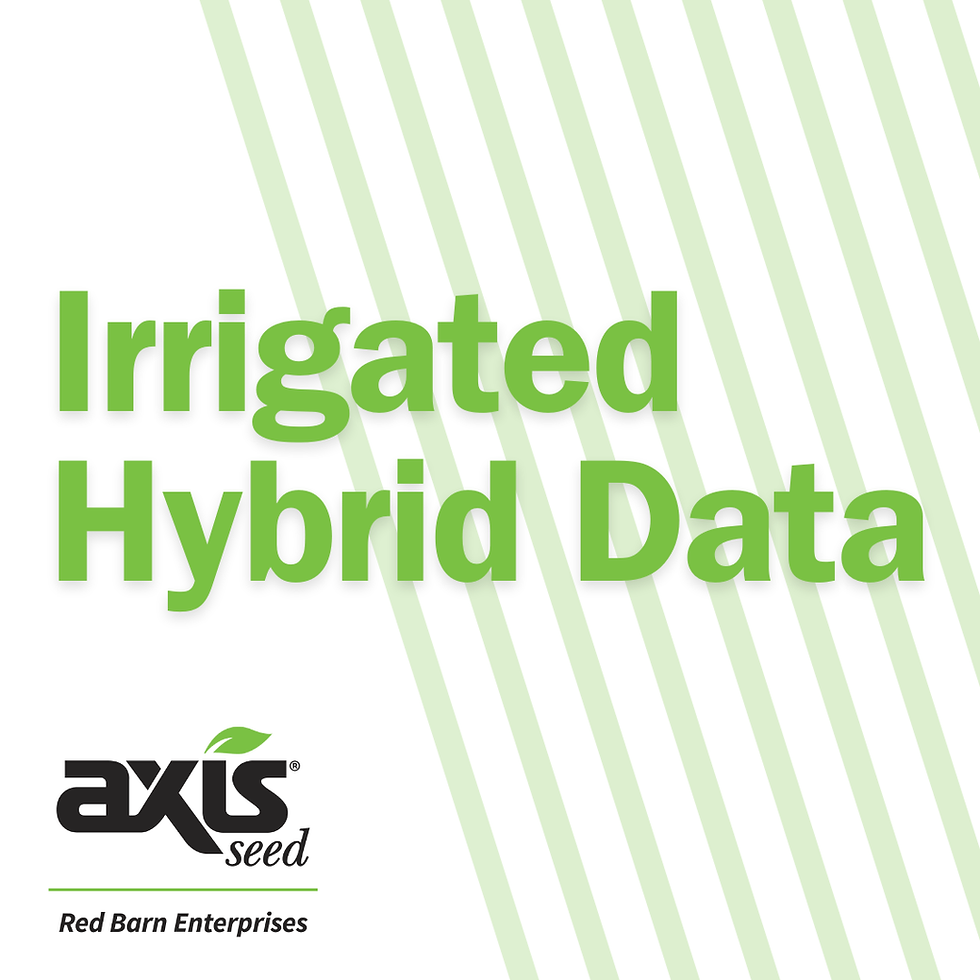Fueling Your Fertility & Biological Plan
- Red Barn Enterprises
- Nov 10
- 3 min read
Soil Sampling Your - Soil’s Gas Gauge
When it comes to planning fertility and biological programs for next year’s crop, the most important step is knowing what’s already in your soil. Soil sampling is the gas gauge for your soil’s nutrient tank; without it, you’re guessing how far you can go before you run out of fuel or overflow the tank.
Start with the Basics - Conventional Testing
At its simplest, soil testing provides the foundation for understanding your soil’s nutrient efficiency and shortcomings. Midwest Labs provides one of the most widely used and dependable conventional soil testing platforms available today.
A 0–6” sample gives an instant snapshot of the nutrients immediately available to the next crop, both macro (N, P, K, S, Ca, Mg) and micro nutrients (Zn, Mn, Fe, Cu, B), along with base saturation levels that show balance and nutrient competition.
Adding a 6–24” nitrate sample gives insight into what’s available deeper in the soil profile, helping you optimize your nitrogen investment. Especially with fertilizer prices still elevated, placing fertility dollars in the right zone and form makes a big difference in ROI.
Key takeaway: Don’t just sample for compliance. Sample for confidence, to understand what’s available now, what’s missing, and where your next dollar in fertility will deliver the most return.
Dig Deeper Advanced Biological and Nutrient Analysis
Conventional tests show what’s there in the soil. Advanced testing helps reveal what’s actually working for you.
Running your 0–6” and 6–24” samples through Agronomy 365 or Next Level Ag Labs adds depth to your fertility picture by breaking results into three distinct nutrient pools:
Plant Available – nutrients immediately accessible to the crop.
Extractable – nutrients that can be released through microbial and root interaction.
Total – the entire nutrient reserve within the soil system.
These tests also measure biological health indicators, like Water Extractable Organic Carbon (WEOC) and Water Extractable Organic Nitrogen (WEON) the food sources that fuel soil microbes. This matters because 60–80% of the nutrients your crop takes up each year are processed by microbes.
By understanding both the chemical and biological sides of soil fertility, you can create a plan that balances nutrient application with microbial stimulation, improving efficiency, reducing waste, and enhancing yield stability.
Pro Tip: A high WEOC reading means you’ve got a thriving food source for microbes. A low one means it’s time to look at carbon-based biologicals or residue management strategies to feed the system.
Next Frontier Soil DNA and Microbial Mapping
The newest frontier in soil analysis comes through Soil DNA testing like TruBio by Earth Optics. This technology uses genetic sequencing to identify the actual microbial species in your soil and the roles they play in nutrient cycling, disease suppression, and overall soil function.
TruBio not only identifies beneficial microbes and their strengths but also highlights gaps in your native microbiome, helping you pinpoint fields where adding specific biologicals can make the biggest impact on nutrient release and root health.
Even more powerful, TruBio can identify soil-borne pathogens and pest risks, including threats like Corn Rootworm or Pythium. With this information, you can make proactive management decisions; from hybrid and trait selection to biological or insecticide applications before damage ever happens.
Which Means: You’re not just reacting to problems you’re preventing them by building a biological plan that works with your soil’s living system.
Bringing It All Together
Ultimately, fertility and biological planning is about using data to drive smarter decisions. Without soil testing, you’re relying on gut instinct, driving your fertility program with no gas gauge. The problem is, the soil has an almost limitless ability to hold nutrients, but oversupplying one nutrient often locks up others, reducing efficiency and profitability.
When you know what’s in the tank, you can:
Target fertility to match yield potential and soil capability.
Apply biologicals where they make the biggest impact.
Avoid costly overlaps and nutrient tie-ups.
Build a more resilient and responsive soil system.
This is what the Max Yield System is all about, growing Maximum Yield, not more products, but smarter placement, better timing, and using the data beneath your boots to build yield and reduce stress in 2026 and beyond.
Grow Your Yield. Grow Your Legacy. Grow Strong with Axis Seed.




Comments